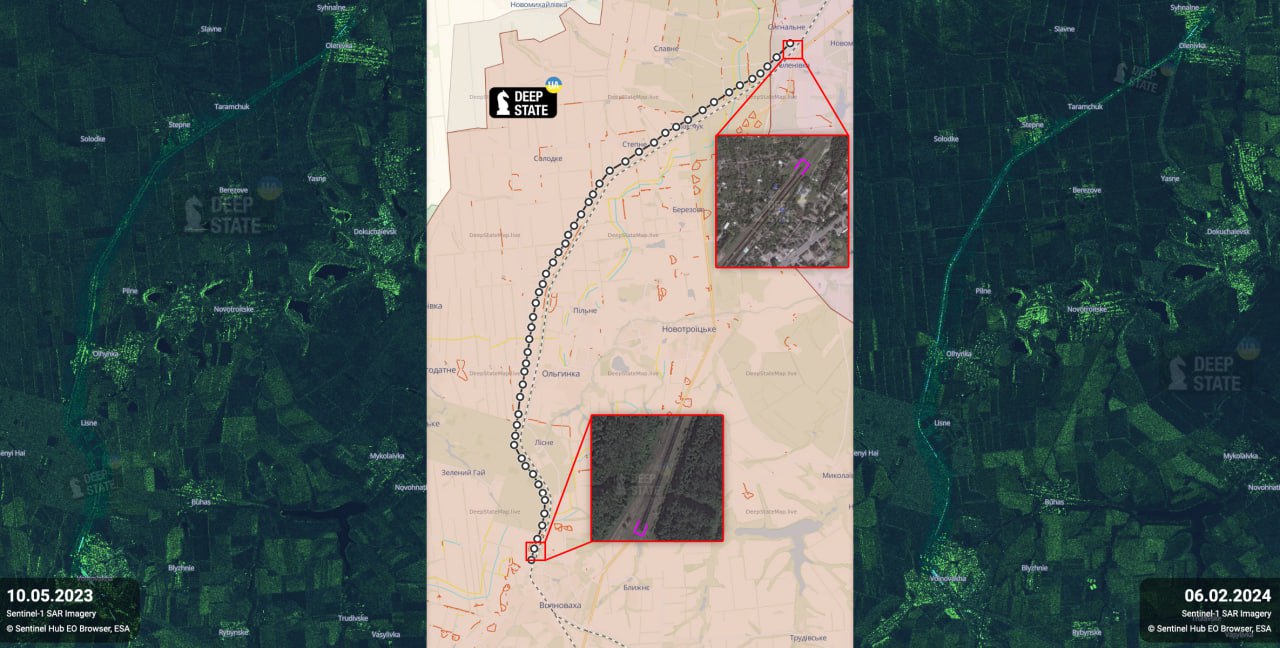Ukrainian and Western observers claim that Russia has assembled a 30-kilometer-long line of nearly 2,000 train freight wagons in Donetsk to act as a “defensive line.”
Saudi Air Force Selects Chinese Wing Loong-10B Recon-Strike Drone As UAVs ‘Rock’ Global Conflicts
The heavy and long barrier made of several thousand tons of metal is a formidable, immovable obstacle for any advancing army trying to recapture/capture territory.
The “Tsar Train” is the second emergence of Russia’s weaponized railways since the war began in 2022.
Rail lines form the backbone of Russia’s transport and logistical mechanism, connecting the vast country with densely interconnected networks.
The same railways are also often used to mobilize tens of thousands of soldiers and war material in a matter of days – a “snap mobilization” capability seen during exercises that have often worried North Atlantic Treaty Organization (NATO) commanders.
EurAsian Times reported in November about one of Russia’s three armored trains, the Yenisei, complete with heavily armed platoon troops with tactical gear, unmanned aerial vehicles (UAV), mortars, and infantry fighting vehicles (IFV).
Publicity material from the Russian Ministry of Defense (RuMoD) showed its BMP-2 infantry fighting vehicle (IFV), 30-mm 2A32 cannon, and a ZSU-23-3 twin-barrelled anti-aircraft gun in action during an exercise.
The train belonged to the Railway Troops of the Russian Federation, a unique one-of-a-kind formation.
Operating under the Central Military District (CMD), “the Yenisei ensures the safety of passenger and cargo transportation on the railways of the Lugansk and Donetsk People’s Republics.” It is unclear if the current 30-km-long railway line is a part of the same formation.

‘Tsar Train’ Spotted on Satellite Images
According to the Institute for the Study of War (ISW), Russian forces appear to have constructed a 30-kilometer-long barrier dubbed the “tsar train” in occupied Donetsk Oblast, “possibly to serve as a defensive line against future Ukrainian assaults.”
Satellite imagery dated May 10, 2023, and February 6 and 10, 2024, shows the “long line of train cars stretching from occupied Olenivka (south of Donetsk City) to Volnovakha (southeast of Vuhledar and north of Mariupol) over the past nine months.” This has been concluded to be a deliberate military tactic by “Russian forces.”
ISW quoted a “Ukrainian source,” who said on February 11 that the railway line consists of “more than 2,100 freight cars into a 30-kilometer-long train.”
The source reported that Russian forces began assembling the train in July 2023, suggesting Moscow intends “to use the train as a defensive line against future Ukrainian assaults.”
The railway line between Olenivka and Volnovakha is roughly six kilometers from ISW’s current assessed frontline southeast of Novomykhailivka at its closest point.
It is in an area of the front that was “relatively inactive when Russian forces reportedly began construction.”
Russian forces have recently made marginal territorial gains in this area. The Russians could also have “other purposes to assemble the train.”
Ukrainian Experts Shed Light
According to the Ukrainian Telegram channel ‘Deep State’ that ISW supposedly quoted, “rolling stock stolen from the temporarily occupied territories was used for construction.” This suggests that the train is meant more as a static platform than a mobile train.
Hurriedly gathering existing railway cars/wagons from newly captured territory could most likely be for cannibalization rather than regular use. However, this is just an informed guess based on the description of the line.
“This is a particular engineering structure, the effectiveness of which is difficult to assess. The idea is clear – an obstacle to the advancement of the Defense Forces.
“It can be considered as a separate line of defense because it is challenging to damage, move or blow up a 30-kilometer-long mass of metal, and the movement of equipment through such an obstacle without breaking through the corridor is impossible,” the post on Deep State said.
Put differently, tanks trying to break through the train will require coming close to the line and then slowing down both before the steel wall and Russian defensive fire.
Using artillery strikes will require several howitzers and a heavy stockpile of ammunition, the acute shortage of which has been well reported.
Ukraine has nearly substituted artillery with loitering munitions owing to a severe lack of guns and ammunition. At the same time, the West has run out of its armories in the pursuit of arming Ukraine.
Its factories have long said they cannot replenish stocks soon, and it will take several years to set up new facilities to ramp up production.
To bring down heavy strikes on a 30-km frontage will be a tall order for Ukraine’s scarce field gun inventory. Even if such strikes are brought down, they will entail massive resources, the engagement of which can be exploited by Russia in several ways.
Even the successful destruction of a particular section doesn’t guarantee success since the destroyed large wagons and debris will slow down the tank and armored movement.
Any success would require the entire 30-km section to be destroyed by a massive fire, leaving tiny debris.
- The author can be reached at satamp@gmail.com
- Follow EurAsian Times on Google News




